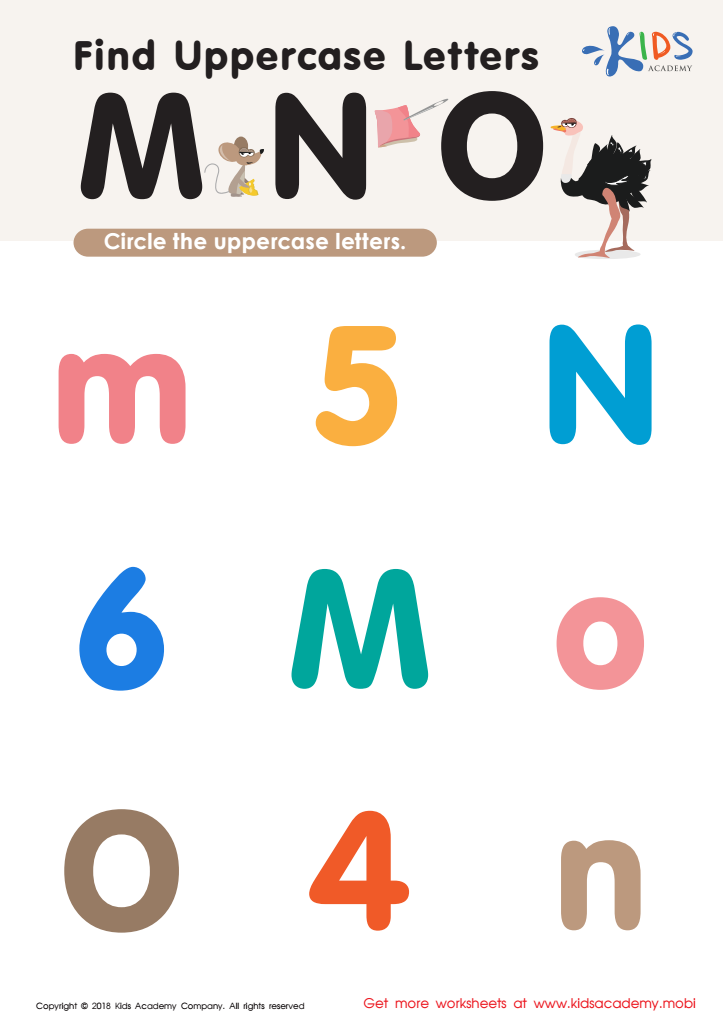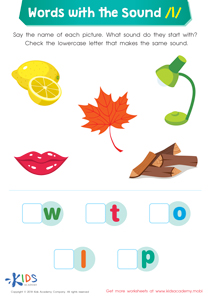Uppercase identification Uppercase Letters Worksheets for Ages 5-8
5 filtered results
-
From - To
Welcome to our Uppercase Letters Worksheets for Ages 5-8! These engaging worksheets are designed to help young learners easily identify and master uppercase letters. From tracing and coloring to interactive activities, our resources promote recognition and comprehension in a fun, accessible way. Children can develop essential writing skills while enhancing their vocabulary with targeted exercises. Perfect for homeschooling or classroom use, our worksheets provide an enjoyable hands-on learning experience, ensuring that each child builds a solid foundation in literacy. Start your child's journey into the world of letters and boost their confidence in reading and writing today!


Find Uppercase Letters Worksheet


Find Uppercase Letters J, K, and L Worksheet


Find Uppercase Letters A, B, and C Worksheet


Find Uppercase Letters V, W, X Worksheet


Find Uppercase Letters M, N, and O Worksheet
Uppercase letter identification is a crucial foundation in early literacy development for children aged 5-8. Understanding these letters enhances phonemic awareness and supports reading and writing skills. Parents and teachers should care about this process for several reasons.
First, uppercase letters are often the first letters children encounter in written texts. Recognizing them helps children navigate books, signs, and their own names, fostering confidence in their reading abilities. Early familiarity with uppercase letters also encourages children to explore language, promoting effective communication.
Second, mastering uppercase letters creates a stepping stone for learning lowercase letters and phonics. As children start recognizing and writing basic words, their understanding of how language works deepens. This knowledge is essential for overall academic and cognitive development.
Lastly, uppercase letters are a fundamental part of social interaction. Children need to identify and use these letters in everyday contexts, like writing greetings, celebrating milestones, or labeling their work. Engaging with uppercase letters empowers children to express themselves and fosters a love for learning.
In summary, parents and teachers play a pivotal role in helping children identify uppercase letters, supporting their literacy journey and setting the stage for future academic success.
 Assign to My Students
Assign to My Students






















